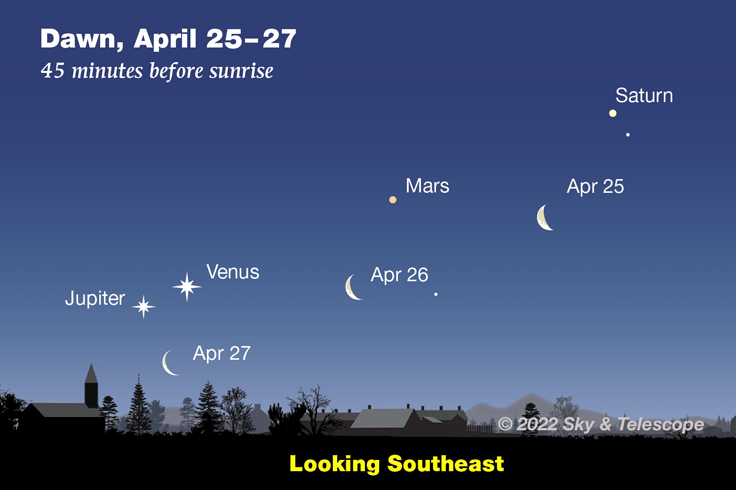With the arrival of April, you’re likely to spend more time outdoors under the stars. So why not bring along our monthly Sky Tour astronomy podcast? It provides an informative and entertaining 12-minute guided tour of the nighttime sky. Download the April episode to explore the fascinating movement of four planets in the sky before dawn.

Listen Here:
Podcast: Play in new window | Download
Subscribe: Apple Podcasts | Google Podcasts | Spotify | Email | RSS | More
This is one of the better months for stargazing. At mid-northern latitudes, spring evenings are generally pleasant, and the bugs haven’t taken control — yet! Even with daylight (summer) time in effect, evening twilight comes fairly early. You’ll find that the Sun sets between 7:30 and 8 during most of this month, and by 9 p.m. it’s good and dark.
Something exciting is happening in the predawn sky right now. Jupiter and Saturn will climb steadily into the eastern sky over the next weeks. Meanwhile, due to their orbital motion relative to Earth, Venus and Mars are pretty much staying put. So Jupiter will appear to move toward Venus and Mars, while Saturn is moving away from them. As shown below, a crescent Moon joins the scene in the latter days of April. But

Sky & Telescope
All of this shuffling creates some amazing arrangements in the predawn sky. On April 5th, two of these planets are within ½° of one another, and on April 29th the other two are likewise within ½° of one another. Would you like to know which ones pair up? Well, check out this month’s Sky Tour podcast to find out!
Now where is Mercury in all this, you might ask. To spot this fast-moving planet, you’ll need to shift your view to the evening sky. In fact, late April will give you the best chance all year of spotting this planet. Our podcast gives you all the help you need to find it — and you’ll learn when Mercury will pass very close to a very famous star cluster!
Night by night throughout April, all of the stars that are so familiar in northern winter’s evening skies will slowly slide toward the western horizon. So this might be your last chance until late this year to spot Orion and his distinctive Belt; Sirius, the brightest star in the nighttime sky; and Aldebaran, marking the eye of Taurus, the celestial Bull.
This is just a sample of all the celestial sights that await you during April. So download or listen to this month’s Sky Tour podcast — a fun and informative way to learn what stars and planets you can spot just by going outside and following the simple (and fun) instructions.
 0
0
Comments
You must be logged in to post a comment.